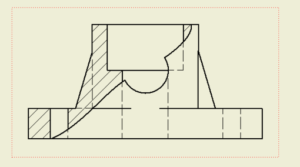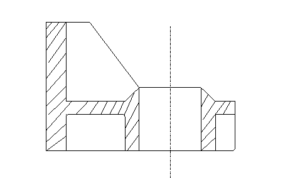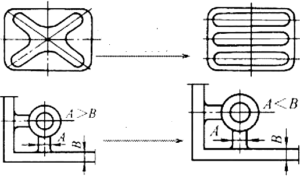The effect of Reinforced ribs on plastic parts
The non-exterior surface of the plastic parts where the strength and stiffness are the weakest. We should be design stiffeners. Not only improves the plastic parts of the forces, increase the strength and rigidity of the plastic parts. And save material.
Stiffener can effectively overcome warpage. For plastic parts with thin walls and large areas, deformation will occur as a result of force. This will greatly affect the use of plastic parts.
Stiffener help injection molding. Stiffeners are thick and have a large cross-sectional area. Place stiffeners where plastic parts are too weak. It can provide an excellent channel for the rapid flow of the melt.


Mistakes in the design of Reinforced ribs
The effect of reinforcing ribs on plastic parts. I don’t think it’s necessary to describe too much.For some product designers. Their understanding may be more profound than mine. In the next text, I will summarize the mistakes in the design of stiffeners. It is 8 points. I am engaged in plastic product design for decades. These are my experiences.
Num 1
The direction of the stiffener is inconsistent with the direction of stripping and the direction of melt flow filling.
In the plastic parts processing process, in order to ejection easy , better mold filling. We should set the direction of the stiffeners to be consistent with the direction of the stripping and the direction of flux filling.The direction of the ribs should be consistent with the contraction direction of the plastic parts. Avoid the formation of internal stress around the stiffener when the plastic part shrinks.The use of stiffeners to prevent shrinkage of the product can increase the dimensional stability of the product.
Num 2
The stiffener thickness exceeds the wall thickness of the outer shape of the article.
The thickness of the ribs is less than the wall thickness of the product. It can prevent plastic parts from shrinkage, dents and other defects. It also prevents stress concentration at the root of the stiffener. Prevents cracks in the roots.The thickness of the root is usually 0.4 to 0.6 times the thickness of the body. The height is 3 times the wall thickness. Adjacent stiffener center distance should be greater than 2 times the wall thickness.
Num 3
There is no arc transition at the root of the stiffener.
There is arc transition at the root of the stiffener.Stress concentration at the root and entrance can be avoided when external forces are applied. Prevent stiffener from being damaged.
Num 4
Stiffener design has a cross
If you want to set a lot of ribs above the plastic parts. These stiffener should be staggered with each other. Avoid cross-connections.If stiffener have a cross ,the intersection of stiffeners can result in wasted material and increased product quality.Problems such as shrinkage, bubbles, distortion, etc. will occur.How to solve. Stagger the position of the stiffener, or set the middle node to be hollow.
Num 5
The spacing between stiffener is too small
The spacing between stiffener should be more than 4 times the wall thickness.

Num 6
The stiffener not have enough ejection slope
Draft angle of the stiffener member, and generally 1 to 1.5 degrees.When designing, attention should be paid to the difference between the upper and lower stiffeners drafts and the wall thickness.
Num 7
The position of stiffeners is not properly set
Stiffener should not be placed in the center of large area plastic parts. If you have to do this, you should add sulcus to the outer surface of the stiffeners. This will cover possible rhyolitic and pits.The stiffener of the plastic brackets are set as far as possible on the compression side. Avoid stretching on the side. If it has to be set on the stretching side, the top should be set to a reinforced shape.
Num 8
Sunken on the back of the ribs did not take measures
The back of the stiffener tends to appear concave. Therefore, patterns can be provided on the back of the stiffener to cover the recesses. Avoid affecting the appearance.
